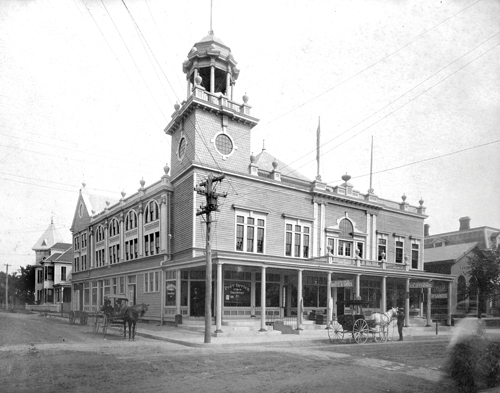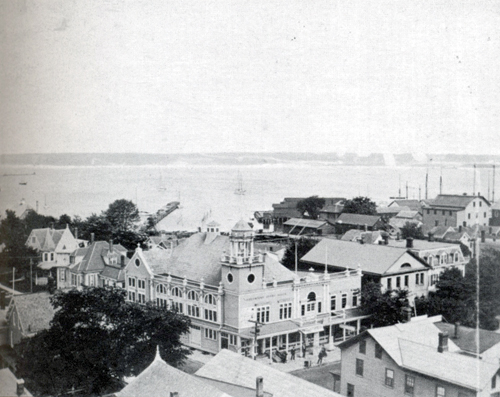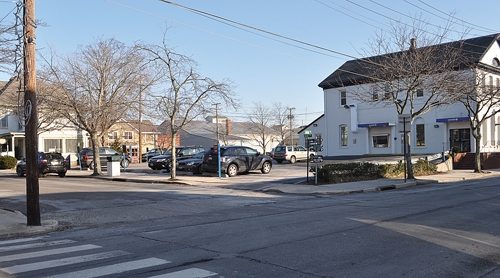Real Estate: A look back at the Greenport Opera House

The Main Street corner where it once stood is now the site of a Chase Bank parking lot, but at the turn of the 20th century the Greenport Opera House was a towering, romantic presence on the North Fork.
Built in 1899 to replace Stirling Hall, which had burned down earlier that year, the opera house was “the pinnacle of the village,” said Greenport historian Carlos DeJesus.
“A lot of things that happened occurred at the opera house,” Mr. DeJesus said.
And while it’s true that famous stage actors like William Gillette (1853-1937), who reportedly owned shorefront property in East Marion, performed at the Greenport Opera House, the space was much more than a theatrical venue. In fact, everything from civic meetings to oyster-opening contests were held there until the building was demolished in 1956.
During its heyday in the years before World War I, the imposing two-story venue, which sat on the corner of Main and Bay streets and featured an ornate cupola with open columns, was a hub of activity.
The aforementioned oyster-opening contest was held at the opera house in 1906 and, despite being “much talked of,” according to The Suffolk County News (Sayville), it was poorly advertised in Greenport and made so little money that the winners went home empty-handed.

“There were six contestants who worked in pairs, each being given a pile of 250 oysters to open,” the article states. Coming in first place were John Ulrich of Sayville and Walter Rilus of Providence, R.I., with a time of 18 minutes, 48 seconds.
In 1910, the Brooklyn Daily Eagle reported that “the summer colony in Greenport” had taken “an immense interest” in planning a large fair, which was to be held for one week at the opera house that August. An article from the same newspaper printed four years earlier states the fair was an annual event benefiting St. Agnes R.C. Church.
According to the 1972 book “Greenport, Yesterday and Today: The Diary of a Country Newspaper,” “talking pictures” were shown at the opera house during World War I.
And in 1919, a story in the Eagle reported that the “Triangle Club, a Y.W.C.A organization composed of Greenport young women,” had leased the opera house for use as a “club room and community center.”
“All the civic organizations had meetings there because it was a big place,” Mr. DeJesus said.
A common misconception is that the opera house and the Greenport Auditorium, built in 1894, were the same structure. In fact, they were always two distinct buildings located on the same street. And unlike the opera house, the auditorium still stands and has been occupied by Goldin Furniture Company since at least the late 1940s.
Longtime Greenport residents who are old enough to remember the opera house, like 88-year-old Bob White, recall it being used strictly for commercial purposes in the mid-20th century.
“There was a dry cleaner in there,” said Mr. White, whose father, Washington, opened his eponymous Main Street hardware store in 1933.
According to a 1972 article in The Watchman, the Greenport post office was once located near the corner of the opera house. This is supported by a circa 1900 photo taken of the structure. And within the actual opera house, everything from “boots and shoes, clothing and pianos were sold in stores fronting on Main Street.”
Tom Monsell, 81, said he remembers a glassware store leasing space on the structure’s first floor.
Before the building’s “huge” second floor was at some point torn down for unspecified reasons, the Watchman reported, it was used “for entertainments, basketball games and dances.” In later years, a children’s play area called Hobby House took up residence at the opera house. However, the building was completely demolished around 1956. Attempts to find out why were unsuccessful, but Mr. White’s guess is probably the correct one.
“It was in bad shape by then,” he said. “The building was just obsolete.”







